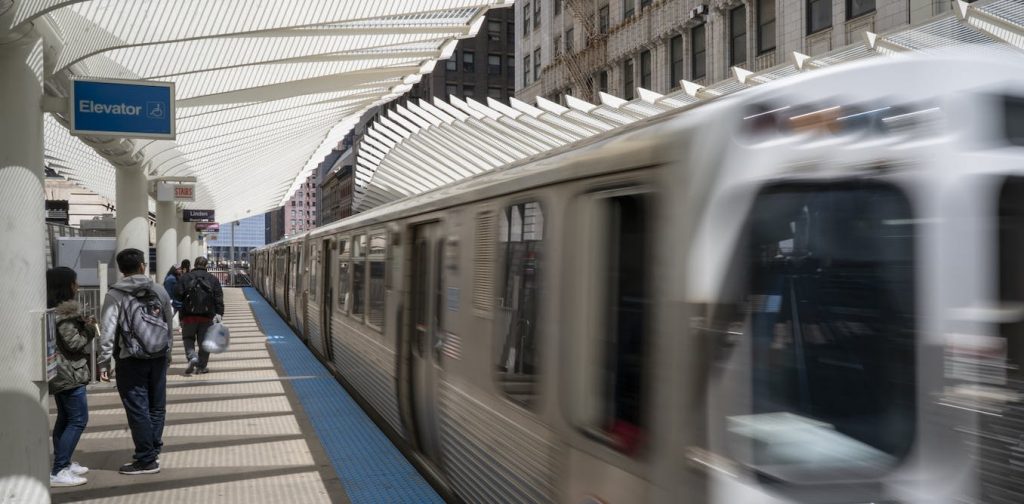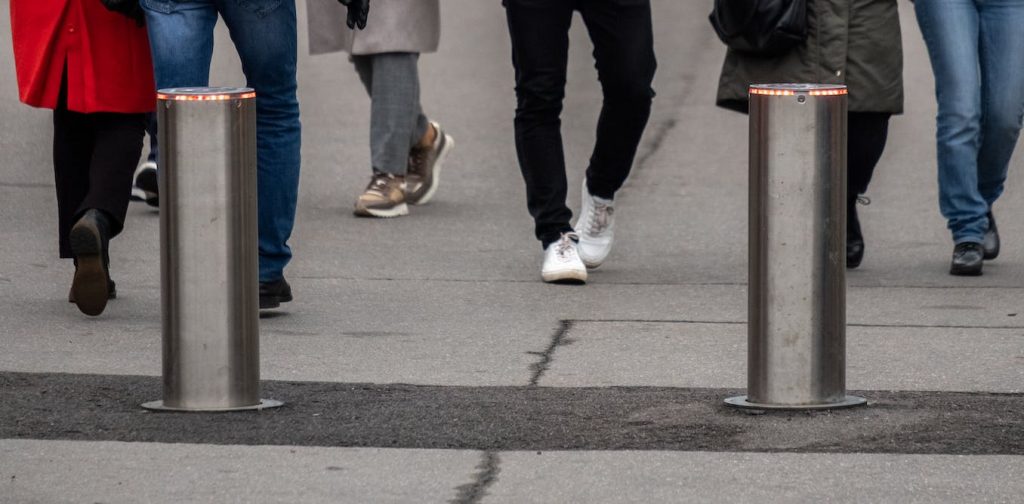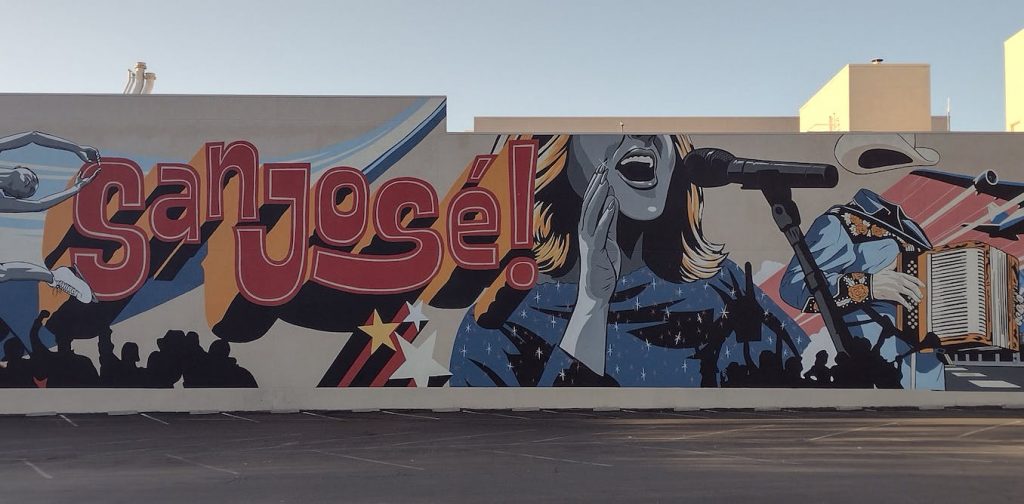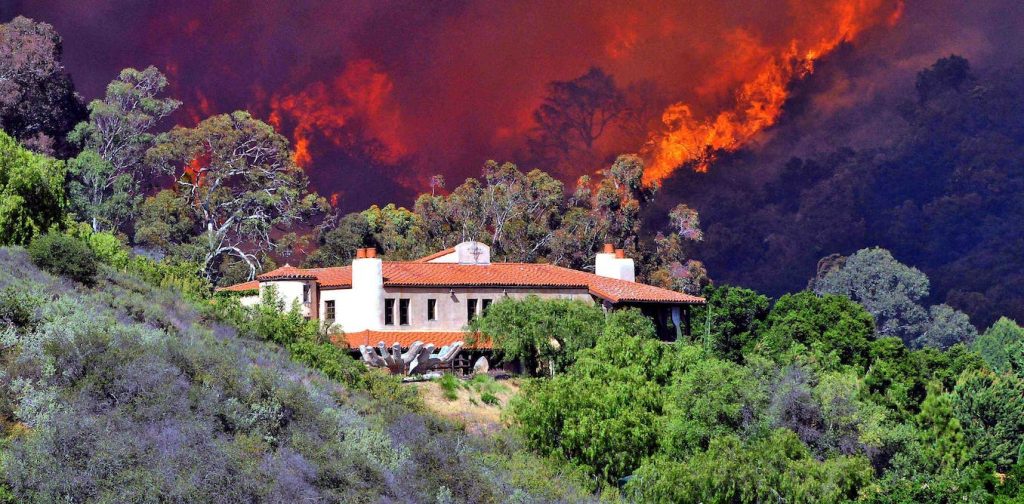Bridge collapses, road repairs, evacuations: How transportation agencies plan for large-scale traffic disruptions
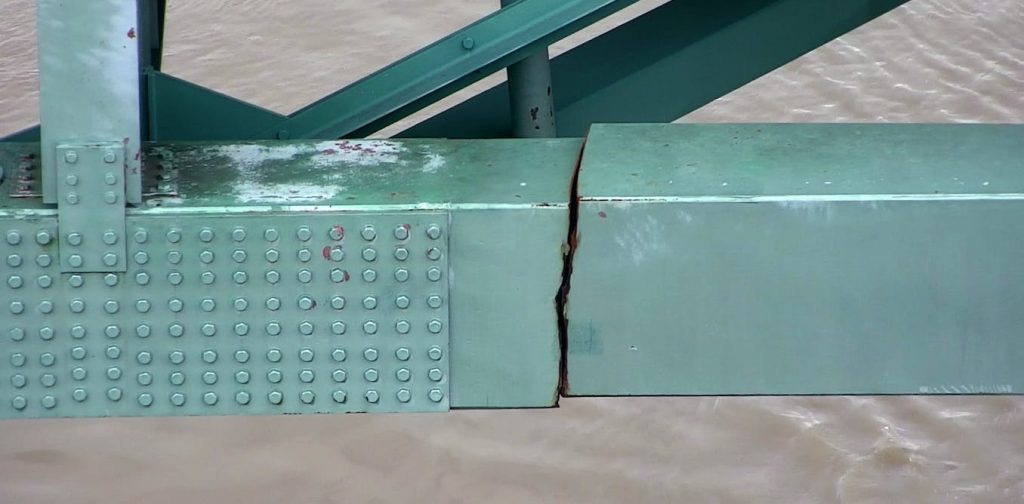

Twelve days after a portion of Interstate 95 collapsed in north Philadelphia during a truck fire, officials opened a temporary six-lane roadway to serve motorists while a permanent overpass is rebuilt. This was a major success after the June 11, 2023, disaster was predicted to snarl traffic for months.
U.S. cities often face similar challenges when routine wear and tear or natural disasters damage roads and bridges. Transportation engineer Lee D. Han explains how planners, transit agencies and city governments anticipate and manage these disruptions.
How do agencies plan for disruptions like this?
Planning is a central mission for state and metropolitan transportation agencies.
Traditional long-term planning focuses on anticipating and preparing for growing and shifting transportation demand patterns. These changes are driven by regional and national economic and population trends.
Shorter-term planning is about ensuring mobility and safety during service disruptions. These events can include construction, major scheduled events like music festivals, traffic incidents such as crashes and hazardous material spills, emergency evacuations, and events like the I-95 bridge collapse in Philadelphia.
Agencies have limited resources, so they typically set priorities based on how likely a given scenario is, its potential adverse effects and the countermeasures that officials have available.
For bridges, the Federal Highway Administration sets standards and requires states to carry out periodic inspections. In addition, agencies develop a detouring plan for each bridge in case of a structural failure or service disruption.
Major bridges, such as those at Mississippi River crossings, are crucial to the nation’s economy and security. They require significant planning, commitment and coordination between multiple agencies. There usually are multiple contingency plans in place to deal with immediate traffic control, incident response and field operations during longer-term bridge repair or reconstruction projects.
This time-lapse video shows crews working around the clock to build a temporary roadway at the site of a collapsed overpass on Interstate 95 in north Philadelphia.
What are some major challenges of rerouting traffic?
Bridges are potential choke points in highway networks. When a bridge fails, traffic immediately stops and begins to flow elsewhere, even without a formal detouring plan. Transportation agencies need to build or find excess capacity before a bridge fails, so that the disrupted traffic has alternative routes.
This is usually manageable in major urban areas that have many parallel routes and bridges and built-in redundancy in their road networks. But for rural areas, failure of a major bridge can mean extra hours or even days of travel.
When traffic has to be rerouted off an interstate highway, it can cause safety and access problems. If large trucks are diverted to local streets that were not designed for such vehicles, they may get stuck on railroad tracks or in spaces too small for them to turn around. Heavy trucks can damage roads and bridges with low weight limits, and tall trucks may be too large to fit through low-clearance underpasses.
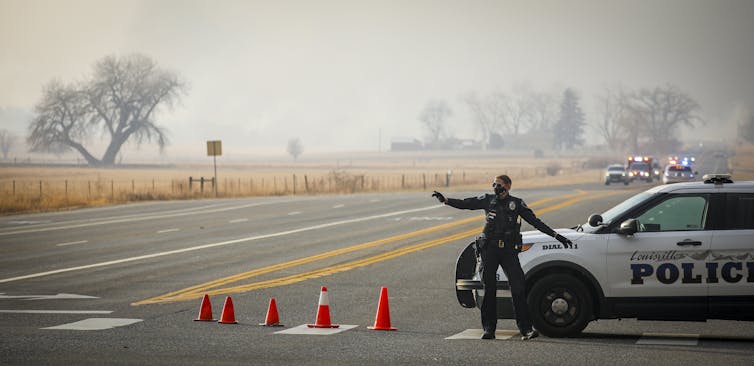 A police officer directs traffic away from a closed road as fast-moving wildfires force evacuations on Dec. 30, 2021, in Louisville, Colorado. Marc Piscotty/Getty Images
A police officer directs traffic away from a closed road as fast-moving wildfires force evacuations on Dec. 30, 2021, in Louisville, Colorado. Marc Piscotty/Getty Images
Successful rerouting requires a lot of coordination between agencies and jurisdictions. They may have to adjust road signal timing to deal with extra cars and changed traffic patterns. Local drivers may need to be directed away from these alternative routes to prevent major congestion.
It’s also important to communicate with navigation apps like Google Maps and Waze, which every driver has access to. Route choices that speed up individual trips may cause serious congestion if everyone decides to take the same alternate route and it doesn’t have enough capacity to handle the extra traffic.
Can these events permanently change commuting and traffic patterns?
In some cases, yes. Some repairs take months, such as the 2022 I-40 Hernando De Soto Bridge crack across the Mississippi River in Memphis, Tennessee. Others can stretch over years, such as the 2007 collapse of the I-35W bridge in Minneapolis. Some structures are rebuilt elsewhere, like the I-880 Cypress Street viaduct in Oakland, California, which collapsed during the 1989 Loma Prieta earthquake.
While traffic is disrupted, motorists change their commute patterns or may even switch to other modes, such as buses or commuter rail. But after repairs are completed, even if some commuters don’t return to their old routes, new traffic soon will take advantage of the restored capacity. In the end, it’s hard to tell just by looking at usage whether commuters have changed their travel patterns permanently.
Will money from the 2021 infrastructure bill reduce the risk of these kinds of events?
Unfortunately, things do fall apart. U.S. infrastructure has been deteriorating for decades. The American Road & Transportation Builders Association estimated that 1 in 3 U.S. bridges need repair.
At the current rate, we are unlikely to catch up to a state of good repair any time soon. But strategic investments like the 2021 infrastructure bill can likely help repair and address critical deterioration concerns for some high-risk bridges, roads, dams and other structures.
Can public transit fill part of the gap?
Public transit may be able to fill the gap in several ways when key roadway links are destroyed or damaged.
Fixed-route rail transit services, such as Washington, D.C.’s Metro and commuter rail services in Chicago, typically have exclusive rights of way, which let them travel at higher speed than buses on surface streets. They also have high capacity that can be increased by adding more cars to each train or running trains more frequently.
If those systems’ routes are not disrupted due to something like a bridge collapse, they may be able to operate above their normal loads. Drivers can shift to transit as long as their trip origins and destinations are conveniently located near transit stations.
Bus transit services don’t usually have exclusive rights of way or means to add extra carrying capacity per vehicle. But they have more flexibility to extend the service areas that they cover and connect otherwise non-walkable locales.
Coordinating use of various transit services and creatively adjusting bus lines could address some local travel needs, such as daily commutes and school and shopping trips. But local public transit services struggle to fill longer-distance gaps that extend beyond their service areas.
In major urban areas like Philadelphia that have large populations and have invested a lot in their transit systems, public transit could carry as much as 25% of daily commute trips. But for disruptions outside of major cities, such as a bridge collapse on an interstate highway in a rural area, public transit probably won’t have much of a role.
It’s also important to note that public transit services are for moving people. Freight shipments, which rely on trucks and other specialized vehicles, also need to get through or around disrupted zones. This often requires large commercial trucks either to use nearby local streets that weren’t designed for such big, heavy vehicles, or to make long-distance detours. That increases delays, pollution, safety risks and transportation costs that will eventually be passed on to consumers.
